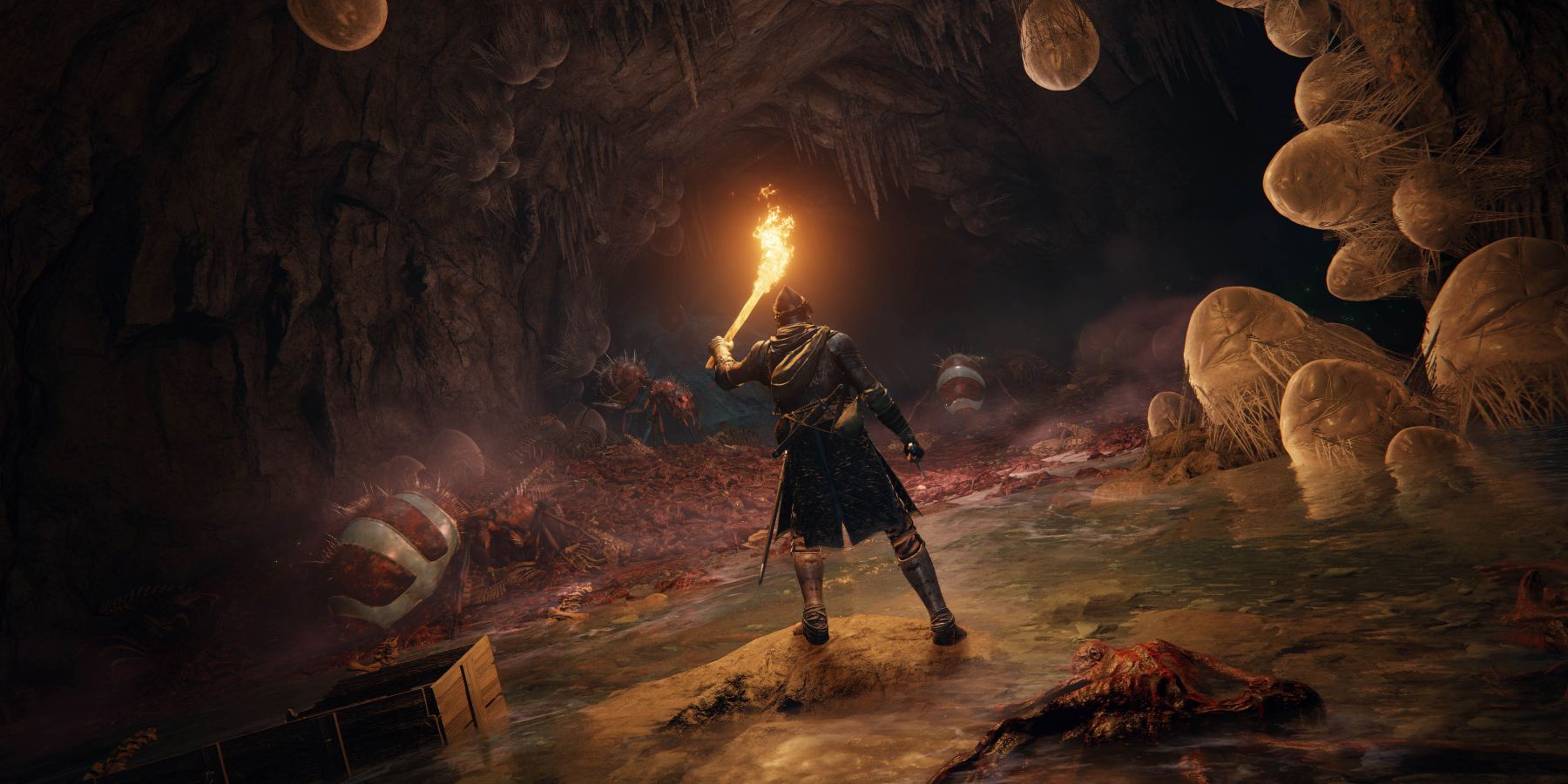Two of the biggest games in recent years have been massive open-world titles, and The Legend of Zelda: Tears of the Kingdom has already been drawing a lot of comparisons to last year's Game of the Year winner Elden Ring. Both titles have been hailed as huge leaps forward for the genre and set the standard for future open-world games to follow. However, while there are a lot of similarities between the two, The Legend of Zelda: Tears of the Kingdom takes one aspect of Elden Ring and runs in the opposite direction with it.
Elden Ring, like most Soulslike games, is infamous for its difficulty with even the simplest enemies spelling trouble for players who find themselves unprepared. At times, Tears of the Kingdom feels like Dark Souls with its increased enemy types and their varying difficulty. However, unlike Elden Ring, Tears of the Kingdom rewards players for their exploration with stronger gear and more health and stamina, allowing them to overcome the challenge posed by these enemies, rather than maintain a punishing difficulty throughout the length of the game.
Tears of the Kingdom Rewards Players Where Elden Ring Punishes Them
The hallmark of an open-world game is the ability to travel anywhere within it and find new quests, items, and secrets at the player's own pace. Traditionally, open-world games would still guide players towards an intended path using high-level enemies to gate off certain areas until a player is strong enough to defeat them. However, Zelda: Breath of the Wild upped the ante of this concept by giving players complete freedom to travel in any direction without much restriction, and Tears of the Kingdom's open world builds upon this concept by adding even more areas to explore, including the Depths and Sky Islands.
While some of these areas may be difficult for players to tackle at first, the game does a great job of providing players with the chance to grow stronger the more they explore, collecting Lights of Blessing from Tears of the Kingdom's Shrines to upgrade their health and stamina to steadily make venturing through Hyrule more manageable. As they explore, players may even come across powerful new weapons and gear that they can use to boost their chances of survival even further. These design choices encourage players to explore and support the idea that they are free to roam in any direction regardless of what point they're at in the game.
Elden Ring, on the other hand, does not give players the same luxury of rewarding them for exploration, and the design philosophy of Elden Ring's map can be characterized by its placement of one of the game's harshest areas right next to the area where players begin their journey. The game starts players off in the region of Limgrave, which doesn't boast the greatest challenge for most players, and nudges them towards Stormveil Castle as their first objective. However, if players get too curious and wander too far to the east they will end up in the rot-filled region of Caelid, home to some of the most difficult enemies for unprepared players.
Not only can this map layout be frustrating for players who aren't expecting this kind of difficulty spike, but the game also takes things a step further in classic FromSoftware style and frequently throws traps at players hidden within underground catacombs and dungeons. Even the highest-leveled players can fall prey to these perils if they're not expecting them, making Elden Ring a consistently difficult game throughout its length. While some players enjoy this type of punishing trial-and-error gameplay, it can turn others off from the game entirely, demonstrating a key difference between Elden Ring and Tears of the Kingdom when it comes to player accessibility.
The Legend of Zelda: Tears of the Kingdom is available now for Nintendo Switch.


